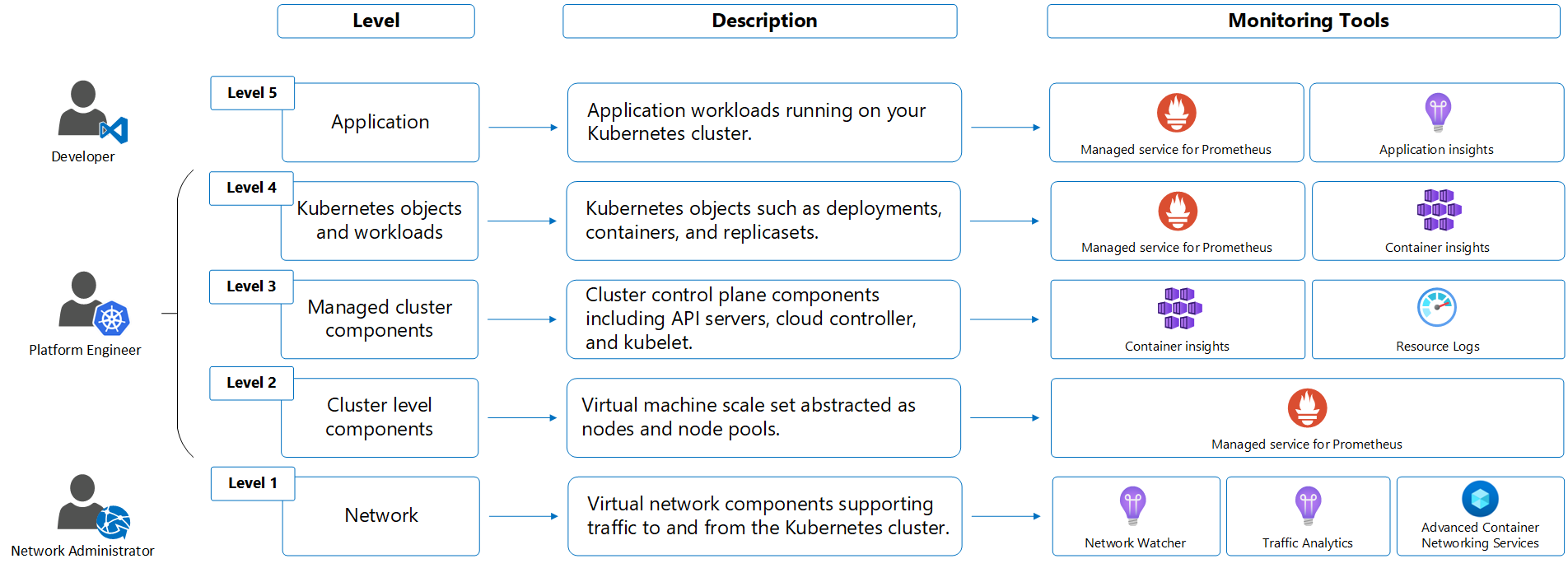Monitoring AKS Clusters
Running applications on Azure Kubernetes Service (AKS) unlocks powerful capabilities for scaling, automation, and resilience. But with these advantages comes a new level of complexity: workloads are distributed across many containers and nodes, and the environment is constantly changing as applications scale up and down. In this dynamic landscape, monitoring is not just a best practice — it’s essential for maintaining the health, performance, and security of your workloads.
Why is monitoring so important in AKS?
Kubernetes abstracts away much of the underlying infrastructure, making it harder to see what’s really happening inside your cluster. Without effective monitoring, issues like resource bottlenecks, failing pods, or security misconfigurations can go unnoticed until they impact your users. Monitoring provides the visibility you need to understand the state of your cluster, quickly identify problems, and respond before they escalate.
How do you monitor AKS effectively?
Monitoring in AKS involves collecting and analysing data from multiple layers: the infrastructure (nodes and networking), the Kubernetes platform itself (pods, deployments, services), and your applications (logs, metrics, and traces). Azure provides integrated tools like Azure Monitor and Container Insights, which offer out-of-the-box dashboards, metrics, and log analytics tailored for Kubernetes environments. For more advanced scenarios, you can leverage open-source solutions such as Prometheus and Grafana, or integrate with third-party platforms like Datadog to gain deeper insights or meet specific operational requirements.
There are multiple layers of infrastructure and applications to consider when monitoring AKS, each of which requires different tools and techniques:
What are the benefits of robust monitoring?
With the right monitoring in place, you can detect and resolve issues faster, optimize resource usage, and ensure your applications are running reliably. Monitoring also plays a key role in security and compliance, helping you spot unusual activity or policy violations. Ultimately, effective monitoring empowers your team to operate AKS clusters with confidence, make informed decisions, and deliver a better experience to your users. In the sections that follow, we’ll explore the core tools and techniques for monitoring AKS, from Azure-native solutions to advanced integrations, and show you how to build a monitoring strategy that supports your production workloads.
